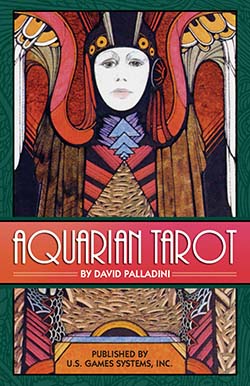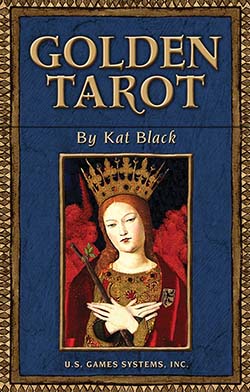What is Tarot?
Tarot --also known as "trionfi" ("triumph"), "tarocchi," or "tarrock"--was originally an allegorical card game developed in Northern Italy during the 15th century. It was primarily used for entertainment or artistic expression, with the cards typically commissioned from local artists by wealthy patrons.
During the 18th and 19th centures, the cards became a popular method of divination among various occultists, spiritualists, astrologers, and magical practitioners. They were often associated with esoteric societies like the Hermetic Order of the Golden Dawn or with practitioners of mystical systems like Kabbalah or numerology.
"Oracle decks", designed specifically for divination and fortune-telling, often diverge from the structure and imagery of traditional tarot, but are used for similar purposes.
In the 20th and 21st centuries, tarot has been used as a form of creative reflection, meditation, therapeutic practice, or spiritual exploration.
The symbolism and imagery of the cards may draw on a wide range of traditions, including Renaissance art, Classical mythology, early Gnosticism & Christianity, Jewish & Islamic mysticism, Hermetic traditions, alchemy, numerology, occultism, popular culture, literature, art, and religion.
Various methods of reading and interpreting the cards have developed over time to fulfill their intended purposes. These typically employ a "spread", or a method of laying out cards in patterns that address a question posed by the reader or a querant. Spreads can include any number of cards and may follow traditional patterns or unique, creative layouts employed by the reader.
Tarot cards have become a popular image in art, literature, music, and film, and are frequently utilized in New Age spiritual practices, alternative medicine, rituals & folk traditions, and psychological or artistic therapies.
Tarot and Oracle Decks at UNT Libraries
-
 Aquarian Tarot Deck
by
Call Number: Boardgame 749 TarotISBN: 9780913866696Publication Date: 2004-01-01
Aquarian Tarot Deck
by
Call Number: Boardgame 749 TarotISBN: 9780913866696Publication Date: 2004-01-01 -
Cary-Yale Visconti Tarocchi by
Call Number: Boardgame 739 TarotISBN: 9780880790383Publication Date: 1984-01-01 -
CBD Tarot of Marseille by
Call Number: Boardgame 751 TarotISBN: 9781572819047Publication Date: 2013 -
The Druidcraft Tarot by
Call Number: Boardgame 741 TarotISBN: 9781250307422Publication Date: 2019-03-19 -
Golden Lenormand Oracle by
Call Number: Boardgame 751 TarotISBN: 9780738756899Publication Date: 2018-01-08 -
-
-
-
The Jungian Tarot Deck by
Call Number: Boardgame 752 TarotISBN: 9781572819061Publication Date: 2017-06-06 -
The Literary Witches Oracle by
Call Number: Boardgame 744 TarotISBN: 9781984824714Publication Date: 2019-08-27 -
Mini Motherpeace Tarot Deck by
Call Number: Boardgame 743 TarotISBN: 9780880795135Publication Date: 2010-03-01 -
-
The New Mythic Tarot by
Call Number: Boardgame 742 TarotISBN: 9780312562014Publication Date: 2011-08-02 -
-
The Rider-Waite Tarot Deck by
Call Number: Boardgame 747 TarotISBN: 9780913866139Publication Date: 2004-01-01 -
-
Tarot Art Nouveau Deck by
Call Number: Boardgame 825ISBN: 9780738700083Publication Date: 2000-09-08 -
-
-
Tiny Universal Waite Tarot Deck of 78 Cards by
Call Number: BF1879.T2 T56 1998ISBN: 1572811226Publication Date: 2004-01-01 -
Universal Tarot of Marseille by
Call Number: Boardgame 750 TarotISBN: 9780738709505Publication Date: 2006-06-08 -
The Wildwood Tarot: Wherein Wisdom Resides by
Call Number: Boardgame 740 TarotISBN: 9781402781063Publication Date: 2011 -
The William Blake Tarot of the Creative Imagination by
Call Number: Boardgame 748 TarotISBN: 9780916804008Publication Date: 2010-10-01

